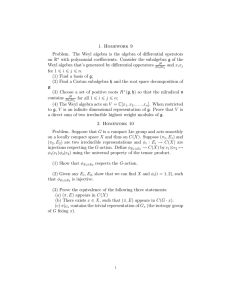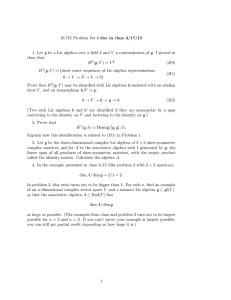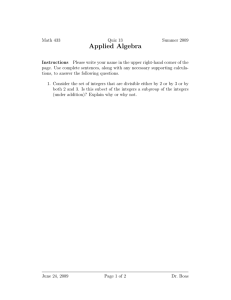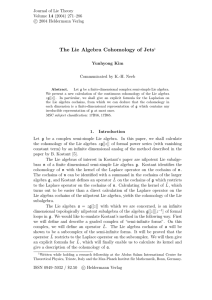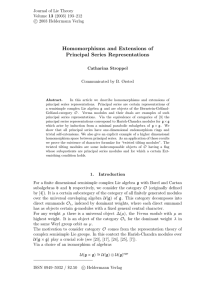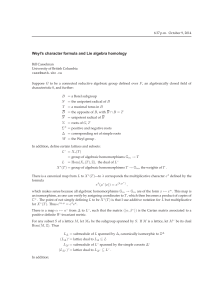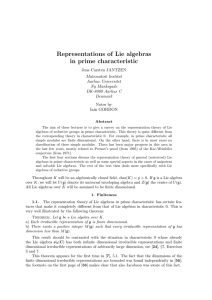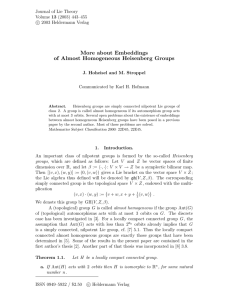David Vogan (MIT), “Characters, cohomology, and Kazhdan-Lusztig.” FOLLOWED BY PIZZA
advertisement
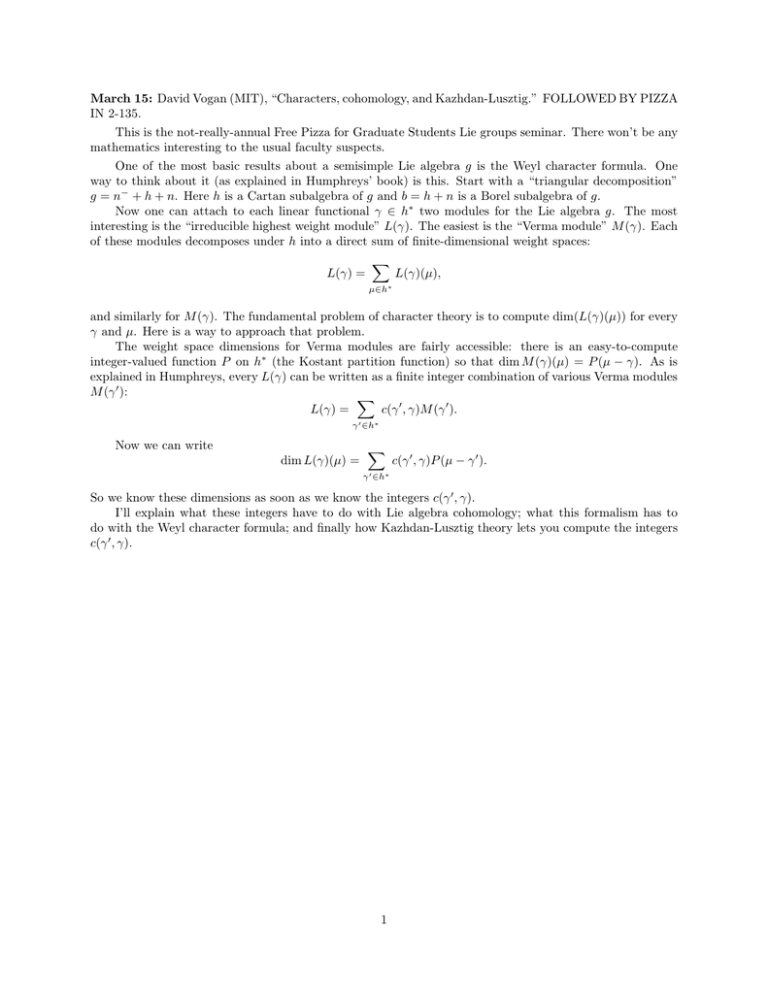
March 15: David Vogan (MIT), “Characters, cohomology, and Kazhdan-Lusztig.” FOLLOWED BY PIZZA IN 2-135. This is the not-really-annual Free Pizza for Graduate Students Lie groups seminar. There won’t be any mathematics interesting to the usual faculty suspects. One of the most basic results about a semisimple Lie algebra g is the Weyl character formula. One way to think about it (as explained in Humphreys’ book) is this. Start with a “triangular decomposition” g = n− + h + n. Here h is a Cartan subalgebra of g and b = h + n is a Borel subalgebra of g. Now one can attach to each linear functional γ ∈ h∗ two modules for the Lie algebra g. The most interesting is the “irreducible highest weight module” L(γ). The easiest is the “Verma module” M (γ). Each of these modules decomposes under h into a direct sum of finite-dimensional weight spaces: L(γ) = X L(γ)(µ), µ∈h∗ and similarly for M (γ). The fundamental problem of character theory is to compute dim(L(γ)(µ)) for every γ and µ. Here is a way to approach that problem. The weight space dimensions for Verma modules are fairly accessible: there is an easy-to-compute integer-valued function P on h∗ (the Kostant partition function) so that dim M (γ)(µ) = P (µ − γ). As is explained in Humphreys, every L(γ) can be written as a finite integer combination of various Verma modules M (γ ′ ): X L(γ) = c(γ ′ , γ)M (γ ′ ). γ ′ ∈h∗ Now we can write dim L(γ)(µ) = X c(γ ′ , γ)P (µ − γ ′ ). γ ′ ∈h∗ So we know these dimensions as soon as we know the integers c(γ ′ , γ). I’ll explain what these integers have to do with Lie algebra cohomology; what this formalism has to do with the Weyl character formula; and finally how Kazhdan-Lusztig theory lets you compute the integers c(γ ′ , γ). 1

